Hot on the heels of our Recap of 2020 post earlier this week, we return to our regular schedule with a brand-new Steel Division 2: Burning Baltics Versus.
Today, we’ll be looking at two Mechanized battlegroups to be featured in our new History Expansion: the renowned Panzergrenadier-Division “Grossdeutschland” and the Soviet Rezerv 43-y Armii.

A quick reminder: the first Steel Division 2: Burning Baltics Versus post detailed two Armored battlegroups. Be sure to check it out here.
Nemesis: Battle of Rimini Launches Today
Before we dive in: today is also the launch of Nemesis: Battle of Rimini. This is our third Nemesis DLC. Get it while it’s hot!
Nemesis: Battle of Rimini allows you to:
- Gain command of two brand-new battlegroups playable either in skirmish or online multiplayer: the veteran 1. Fallschirmjäger-Division and 2nd New Zealand Division.
- Access new units such as the British Bristol Beaufighter heavy fighter, Greek Martin Baltimore bomber, German (captured) Re.2005 fighter, as well as various new infantry units such as Oplites Greek mountain infantry, and New Zealand Maoris.
- Take control of one new Ace, the Greek lieutenant Marinos Mitralexis, one of the first WW2 pilots to be credited with a kill by ramming in 1940. He is featured with his Spitfire Mk.Vc.
Panzergrenadier-Division “Grossdeutschland”
First up, the renowned and arguably one of the most famous German divisions of World War II: the Panzergrenadier-Division “Grossdeutschland”. The Wehrmacht’s fighting elite, this division was Nazi-Germany’s equivalent of the old Imperial Prussian Guard, with state-of-the-art equipment and fielding only the best soldiers.
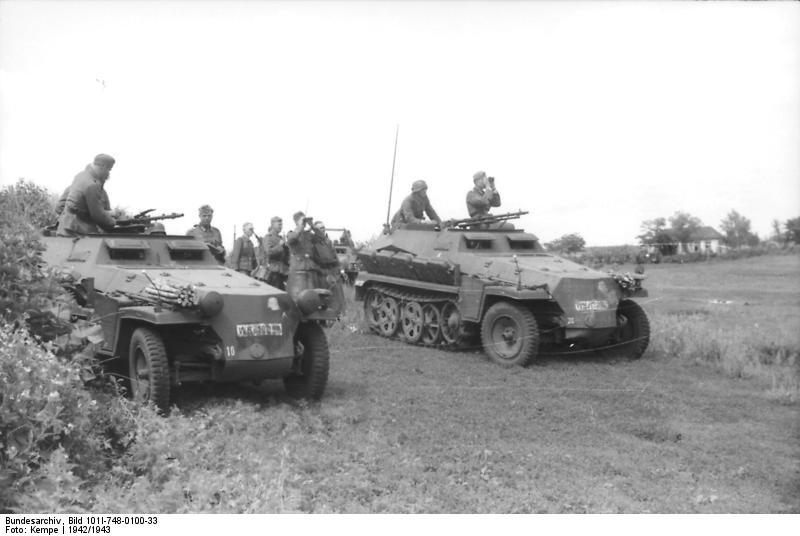
Starting as a ceremonial regiment, the “Grossdeutschland” became the propaganda poster boy for all the German armed forces, and in the course of the war, bummed up from regiment to motorized infantry division, to Panzergrenadier division, to a Panzerkorps (essentially a super-sized division) in the last months of the war. This formation fought in many noteworthy battles, including the Battle of Stonne during the invasion of France in 1940, the Battle of Kursk in 1943, the first Battle of Targu Frumos in Romania in early 1944 (the second battle was featured in our Steel Division 2: Black Sunday), and after refitting, sent north to the Baltics to take part in Operation Doppelkopf.
Although classified as a Panzergrenadier division, it was actually better equipped and more powerful than any contemporary Wehrmacht or SS Panzerdivision, thanks to some “special features” including no less than three (the norm was one) tank battalions, a StuG battalion for extra measure, six infantry battalions (a large number transported in armored half-tracks), four artillery battalions (including one self-propelled), four Pioneer companies, and much more.
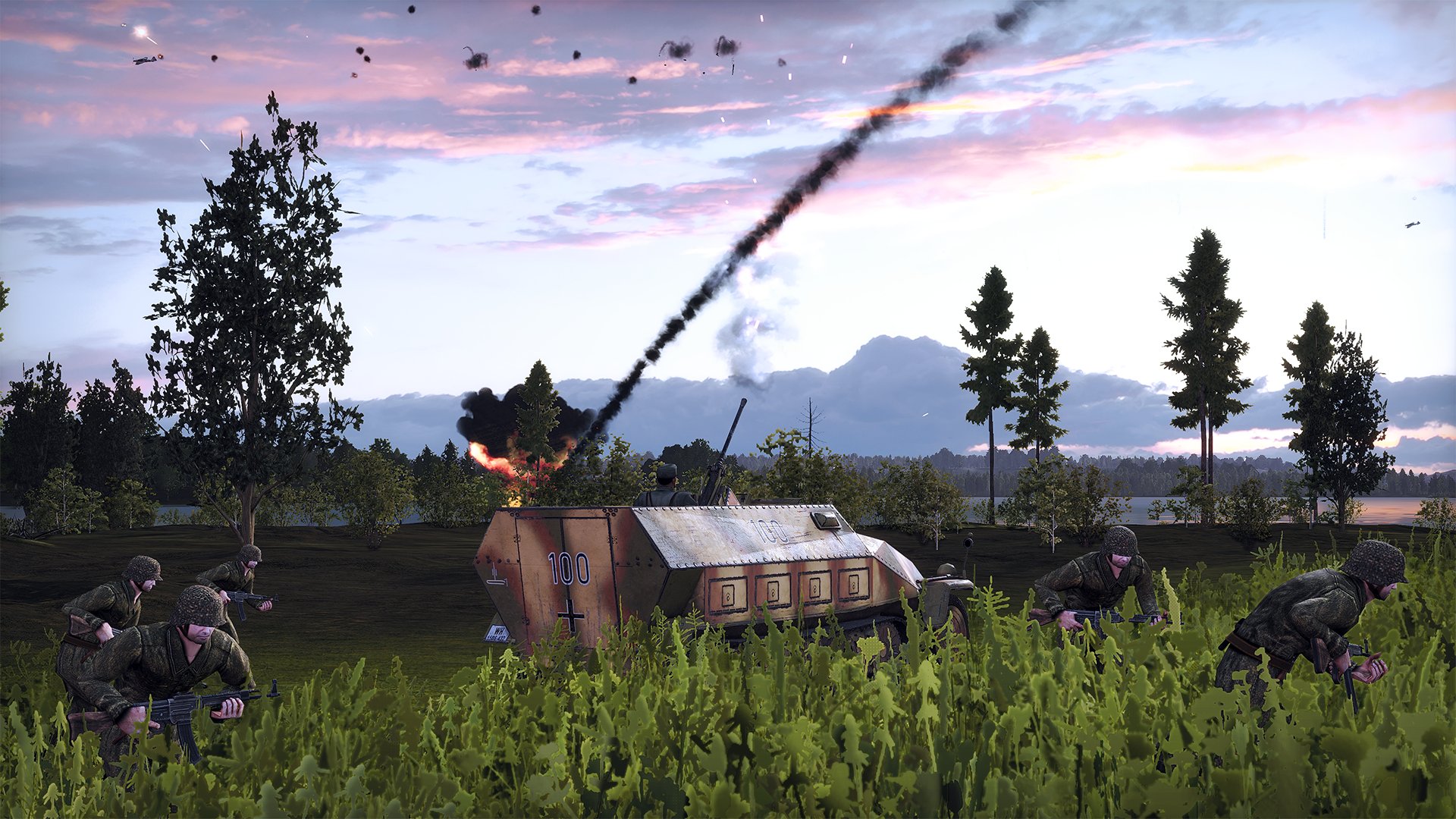
It’s clear that Panzergrenadier-Division “Grossdeutschland” is a heavy-weight brawler, and even this late in the war, it was supremely dangerous on the battlefield. However, the brutal combat on the Eastern Front also eviscerated this formation. Barely 900 men survived the onslaught in the Baltics, and later East Prussia, before managing to escape to Germany proper to surrender to the British.
One of them was the German-Alsatian volunteer Guy Sajer, who wrote about his combat experience with this division in his book, The Forgotten Soldier.
Grossdeutschland’s main features
How to best describe the Grossdeutschland? Refitted and relatively fresh, this battlegroup is lavishly equipped with the latest materiel. There is ample choice in every category, except in one: the air force. Plane choices are few, with lots of slot restrictions. When you fight as the Grossdeutschland, you’ll have to do without any real air support.
- A bunch of new units can be found in this battlegroup. First off is the Aufklärungspanzer 38(t), a light recon tank, built like a Hetzer on surplus obsolete Panzer 38(t) chassis.
- The PaK 41 75mm Gerlich: the largest anti-tank gun designed on the squeeze bore principle firing a high-velocity tungsten (APCR) round. Highly accurate and with devastating penetration, it also has some drawbacks: less damage and limited range.
- The Grossdeutschland will also feature the new SdKfz. 251/9 Ausf. D fire support and the SdKfz. 251/17 Ausf. D AA/AT from Panzerverband Strachwitz.
- The new SdKfz. 251/21, which is a fire support half-track fitted with triple 15mm AA MGs. It can be used as close range AA support and as a transport vehicle.
- New infantry units, including the Sturmgrupp, which is an 8-man squad equipped with MP-44s and a Panzerfaust. There will also be a Sturmgrupp (MG) variant, which features a MG-42 plus AT grenades, as well as a 2-man command squad of Sturmgrupp Führer.
- All regular Grossdeutschland infantry units will be duplicated in order to feature the division’s specific uniforms, including camouflage, cuffs, etc.
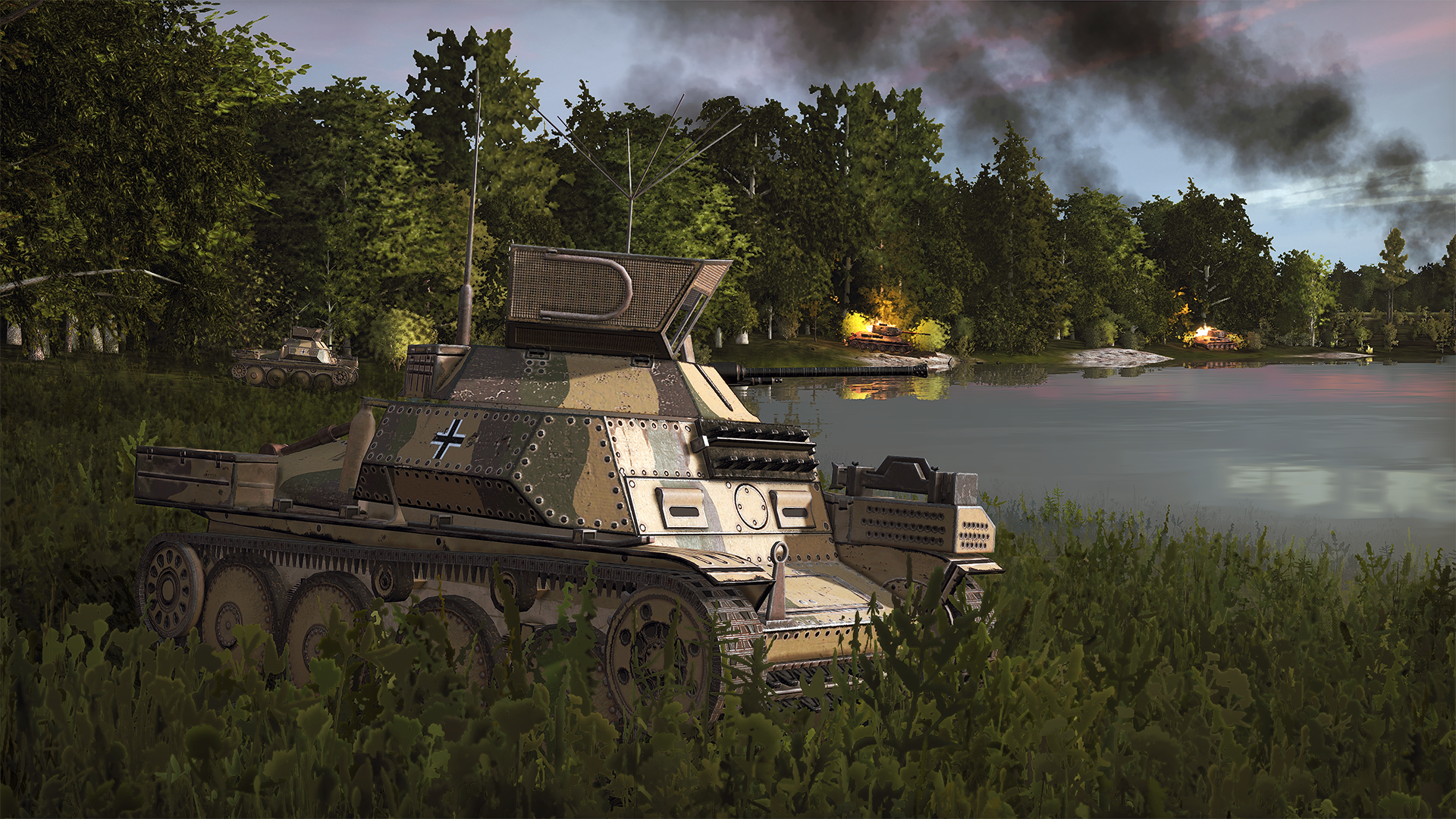
The Panzergrenadier-Division “Grossdeutschland” is going to feel like its historical counterpart: an elite battlegroup, well-rounded, and a force to be reckoned with on the battlefield.
Rezerv 43-y Armii
The Rezerv 43-y Armii (43rd Army’s Reserve) battlegroup is the result of an amalgamation of several independent regiments and battalions. As such, this reserve formation did not actually fight under one unified command during the Baltic operations. Instead, each individual unit was dispatched depending on the circumstances on the ground. Regardless, for ease of gameplay and in the name of fun, you can now find them as a whole under 43rd Army’s Reserve banner.
A special unit is the 36th Penal Battalion: unlike previous Shtrafniki, which were from penal companies, this is a full penal battalion. This means that all its soldiers are former officers, very eager to recover their rank (and the privilege that comes with it). For those who are interested in the historical background of these Red Army penal units, we cannot recommend more highly the following book Penalty Strike: The Memoirs of a Red Army Penal Company Commander.
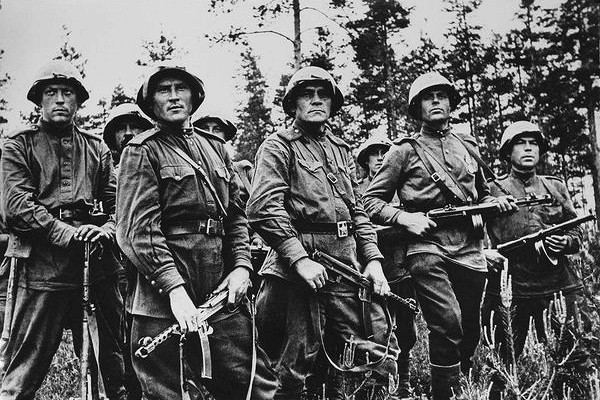
The parent formation, the 43rd Army, was a field army formed in 1941 and participated in the Battle of Smolensk and later, the Battle of Moscow. It fought in the second Battle of Smolensk in 1943, before participating in Operation Bagration and advancing into the Baltic Region. After Operation Doppelkopf, 43rd Army kept up combat operations in the region, breaking into Third Reich proper with the East Prussian Offensive in early 1945.
Rezerv 43-y Armii’s main features
The combination of all the various independent regiments and formations makes up for a heavy-hitting mechanized battlegroup. While the 43rd Army’s Reserve might lack recon forces and artillery units, it features a sizable amount of tanks, backed up with strong air support.
- This mechanized battlegroup is made up of several tank brigades (the 10th Tank Brigade, 34th Gds. Tank Brigade and the 143rd Tank Brigade), the bulk of their arsenal consisting of T-34/76 with smaller numbers of T-34/85 being deployable in Phase B onwards.
- The 2nd Gds. Independent Heavy Tank Rgt can deploy the IS-2 for heavy firepower during the later stages of a match. The 377th Gds. SP Artillery Rgt. is on call with the SU-122 and SU-152.
- Furthermore, expect lots of engineers and flamethrower units thanks to the 5th Sapper Brigade.
- One of the specific features of this battlegroup is that most of its infantry squads will field SMG with only a few rifle units.
- The officer Shtrafniki is a new unit which features the same composition as a regular penal squad but due to the high-ranking members carries the Fanatical trait. The same goes for the new Avto. Shtrafniki (officers) which is a 15-men squad (also Fanatical fully equipped with SMGs (PPSh-41 & 43) and AT grenades.
- Lots of bombers, close-support, and tank buster planes will be on call with the 43rd Army’s Reserve.
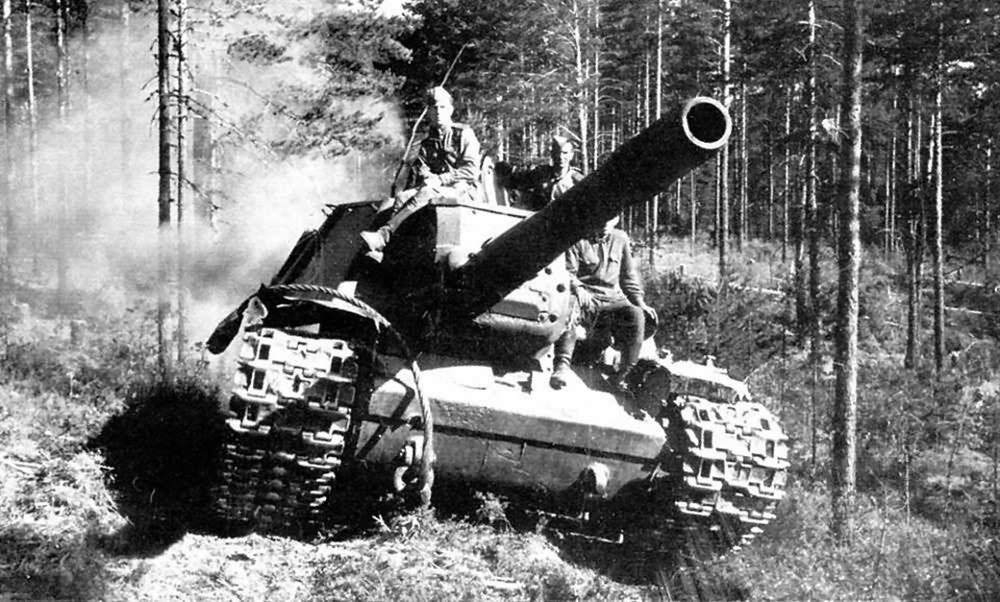
The 43rd Army’s Reserve can pack a punch on the assault with a strong variety of medium and heavy tanks, SMG squads, and engineers, as well as bombers and close air support planes. It lacks support and artillery units to do well in a defensive battle, however.
What can you expect from Steel Division 2: Burning Baltics?
In case you missed our reveal: Steel Division 2: Burning Baltics will feature:
- 1 massive new Army General campaign set in the Baltics during Operation Doppelkopf, allowing you to take command of either the attacking Axis 3. Panzerarmee or the defending Allied 1st Baltic Front.
- 8 new Divisions, playable solo, coop, or in multiplayer, including 6 which took part during Doppelkopf and 2 divisions from Army Group North’s theater of operations.
- 120+ new units, including a variety of new models such as Aufklärungspanzer 38(t) recon tank, Ar 196 A-3 floatplane, Soviet MT-13 160mm super-heavy mortar and the BS-3 100mm heavy AT gun.
- 1 gigantic new 10v10 map, the largest map ever to be included in Steel Division 2.
- 2 new Nations: Lithuania (Axis) and Estonia (Allies) and 2 new Aces.
New Protosszocker SD2 League Kicking Off Soon!
Before we bid you adieu, one last thing!
The most excellent Protosszocker is back organizing a new Steel Division 2 League. The start date for the competition is February 13th, and you can sign up until February 9th.
If you want to compete, and see who reigns supreme as the best Steel Division 2 player, don’t hesitate to sign up. Find more information here.
We are always keen to hear what you think.
Reach out to us through our Steam forums and Eugen forums, or check our (Facebook and Twitter). Looking for an online game? Visit the kick-ass Discord server or Reddit page.
Take care, commander!

Changed files in this update